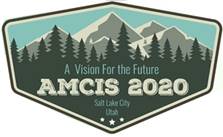Loading...
Abstract
A four-year college degree is no longer required by many employers. Instead, employers are seeking candidates who are able to solve problems creatively and think outside the box fearlessly. As a result, educators take a fresh look at new learning technologies to meet this demand outside the formal education systems. Among different education technologies, immersion learning technologies have received special attention in recent years. According to Dale’s Learning Cone, the level of engagement offered and maintained by these tools is critical to learning outcomes. Virtual Reality (VR) applications provide more engaging and purposeful learning experiences than other any other multimedia-rich tools. However, to bring more benefit than harm, those tools must be designed appropriately and effectively. Hence, we introduce a framework to understand and design educational VR applications. Our framework offers a new perspective on modeling the relationships between VR features, key affordances enabled by those features, and experiential learning needs met by the identified affordances.
First, we studied how VR advance learning processes by analyzing five commonly used VR applications in K-12. Our research was focused on VR use-cases in alternative STEM education. Then, we identified the key features of these programs. We grouped the features based on three main use-cases that are typical in the evaluation of learning platforms–content creation, content delivery (instruction), and learning assessment. We also investigated the features available to students and teachers. Having analyzed the list of features from the Needs-Affordances-Features perspective, we derived a list of affordances satisfied by those features – individually or collectively. We refined this list after evaluating how teachers and students utilized features and as a result, identified five categories of VR affordances: knowledge co-creation, knowledge exchange, knowledge integration, knowledge application, and knowledge assessment. Lastly, we examined how these affordances satisfy five groups of higher-order experiential learning needs in VR environment including sensory experience (know-where), temporal experience (know-when), interactional experience (know-who), cognitive experience (know-what), behavioral experience (know-how), and metacognitive/emotional experience (know-why).
This framework serves several purposes. First and foremost, our framework offers VR developers a simple guide on how to understand students’ experiential learning needs and enhance the technology design to address those needs. For example, VR developers can model how students and teachers would react to different affordances before planning the features. This can potentially reduce the number of design iterations and maximize the chance of product success. Likewise, after development, this framework can inform the evaluation of VR applications including user test plans. Educators are the second group who benefits from this new framework in many ways. By using this framework, educators can first decide whether using a VR application is the right decision, and if so, how to choose the right program that suits their students’ experiential learning needs. Lastly, researchers in both education and technology fields, can adopt, test, and expand our framework to describe and understand the role of VR technology in enhancing students’ learning experience and outcome. Ideally, adoption of this framework would result in a better understanding of VR design and applications more systematically and holistically that would benefit alternative models of education as well as inform the VR application in other fields.
Recommended Citation
Adzgauskaite, Marta and Abhari, Kaveh, "Virtual Reality Applications and Experiential Learning Needs: The Needs-Affordances-Features Perspective" (2020). AMCIS 2020 TREOs. 65.
https://aisel.aisnet.org/treos_amcis2020/65
Abstract Only
When commenting on articles, please be friendly, welcoming, respectful and abide by the AIS eLibrary Discussion Thread Code of Conduct posted here.


